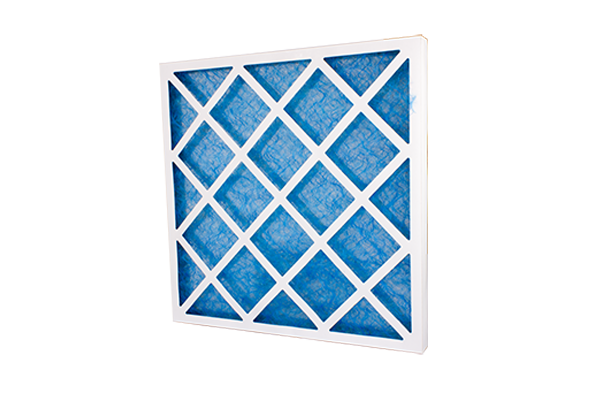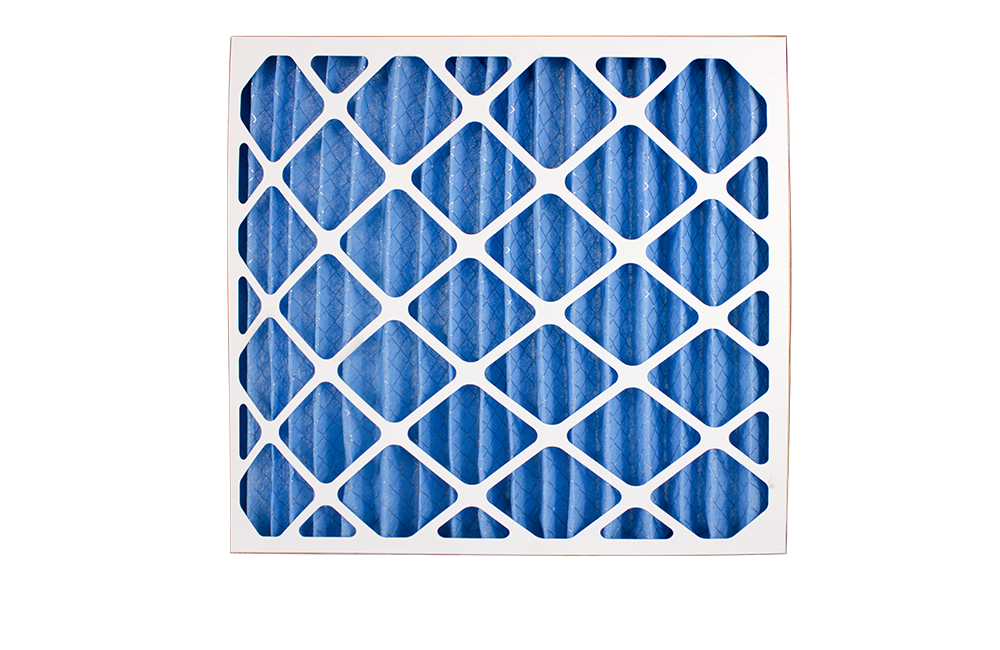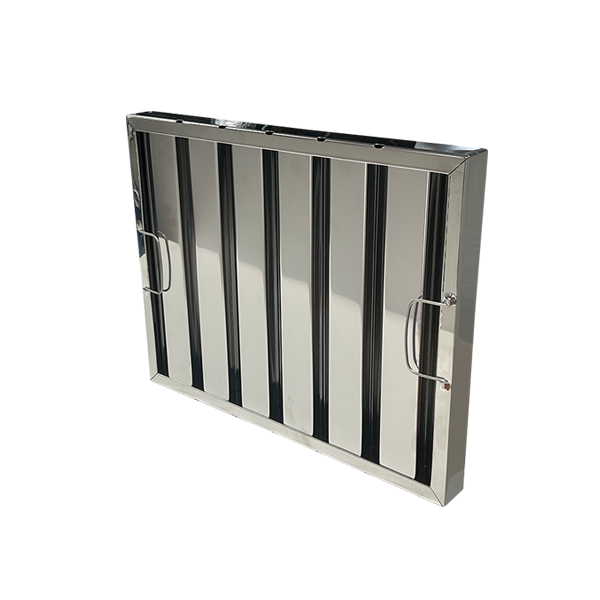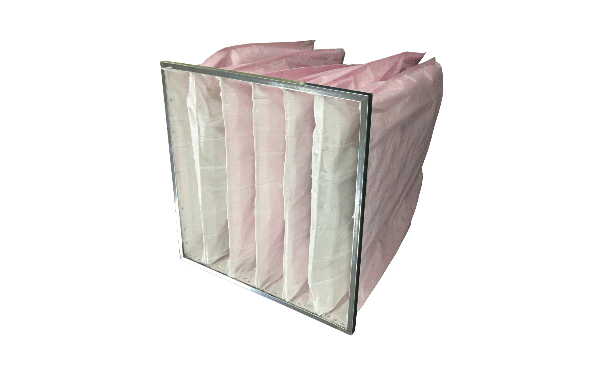Filters
Filtering equipment is crucial for both kitchens and our environment. Filtering out odors and smoke emitted outdoors is mandatory according to the guidelines and specifications followed by municipalities. Additionally, it is important to maintain the peace of neighbors and prevent them from lodging complaints.
Filtering equipment not only captures mass grease, keeping ducts cleaner and extending the lifespan of fans but also reduces the risk of fires, which can be highly dangerous in kitchens.
There are different types of filtering equipment available for use in both clean and greasy air environments.

Dust Filter (Fresh Air): The importance of "Dust Filter (for Fresh Air)" to human health is significant because it is used to provide clean air and purify indoor air from pollutants. By improving indoor air quality, it enhances the quality of the air we breathe and reduces the inhalation of dust, pollen, mold spores, chemicals, and other particles indoors. This can help prevent respiratory illnesses and allergic reactions.
Low-quality indoor air can contribute to respiratory problems, allergies, asthma, and other respiratory conditions. Therefore, filters that provide clean air are essential for maintaining human health. Additionally, reducing dust and other pollutants can improve indoor quality of life and enhance overall health and well-being. Therefore, the "Dust Filter (for Fresh Air)" plays a crucial role in improving indoor air quality and safeguarding human health.

Pleated Filters: Pleated filter is a type of air filter used for air purification, typically in HVAC (Heating, Ventilation, and Air Conditioning) systems. Pleated filters feature a folded structure, providing more surface area for effective filtration. These filters are usually made of fabric, paper, or synthetic materials.
In oily systems, pleated filters are specially designed with high oil absorption capacity to capture oil vapors and other oil particles commonly found in kitchen environments.
Pleated filters used in oily systems often feature designs that are easy to clean or cheap to disposable and maintain. Some models are equipped with features that facilitate easy filter replacement, ensuring regular maintenance and efficient system operation.
These filters are commonly used in kitchen ventilation systems, such as commercial grease hoods and extraction arms. Their high oil absorption capacity helps ensure clean air in kitchens and reduces the risk of fire hazards.

Baffle Filters: Baffle filters are a type of filter commonly used in kitchen ventilation systems, particularly in commercial settings such as restaurants and hotels. They are designed to capture grease, smoke, and other airborne particles generated during cooking processes.
These filters consist of multiple layers of metal panels arranged in a zigzag or labyrinth pattern. The panels are angled or overlapped to create gaps between them. As the exhaust air containing grease and smoke passes through the filter, the particles collide with the metal panels and get trapped in the gaps between them. This allows the grease to drain away while preventing it from passing through the filter and accumulating in the ductwork or being released back into the kitchen environment.
Baffle filters are highly effective at removing grease and smoke from the air, helping to improve indoor air quality and reduce fire hazards in kitchen spaces. They are also relatively easy to clean and maintain compared to other types of filters, as the grease can be easily wiped or washed off the metal panels.
Overall, baffle filters play a crucial role in ensuring the safe and efficient operation of kitchen ventilation systems by capturing grease and smoke particles before they can cause problems.

Active Carbon Filters: Active carbon filter is a type of air filter used to remove bad odors, chemical gases, and other volatile organic compounds from the air. Active carbon filters are made from materials such as carbon granules or carbon fibers, which have a high surface area, and are activated through a special process to enhance their adsorption capacity.
Active carbon filters are commonly used in air purification systems, air purifiers, ventilation systems, and air cleaners due to their ability to adsorb pollutants present in the air. These filters are effective in applications such as odor control, gas purification, and removal of volatile organic compounds (VOCs).
The adsorption properties of active carbon filters help to clean the air by capturing pollutants at a molecular level, thereby providing a clean indoor environment. These filters are widely used to assist in air purification in areas such as industrial facilities that use chemicals, laboratories, medical facilities, and regions with high levels of air pollution.
Active carbon filters may need to be replaced after a certain period or when a certain level of contamination is reached. Their effectiveness can decrease over time, and regular maintenance or replacement may be necessary.
Inoxos calculates the number of carbon filters required for your kitchen based on your ventilation system and pressure loss, selecting the most suitable system for you.
 ESP Systems: ESP (Electrostatic Precipitator) system is a type of air purification technology used to remove particles such as dust, smoke, and other airborne contaminants from the air. It works by applying an electric charge to the particles in the air, causing them to become ionized. These charged particles are then attracted to oppositely charged plates or electrodes within the ESP system, where they adhere to the surface and are collected.
ESP Systems: ESP (Electrostatic Precipitator) system is a type of air purification technology used to remove particles such as dust, smoke, and other airborne contaminants from the air. It works by applying an electric charge to the particles in the air, causing them to become ionized. These charged particles are then attracted to oppositely charged plates or electrodes within the ESP system, where they adhere to the surface and are collected.
The process of electrostatic precipitation involves several stages:
Ionization: Airborne particles pass through a section of the ESP where they are charged with an electric charge.
Collection: The charged particles are then attracted to oppositely charged plates or electrodes, which act as collection surfaces. As the particles pass through this section, they adhere to the plates due to electrostatic attraction.
Cleaning: Periodically, the plates are cleaned to remove the accumulated particles. This can be done by mechanical means such as shaking or vibrating the plates, or by washing them with water.
ESP systems are commonly used in industrial settings such as power plants, steel mills, cement plants, and other facilities where there are high levels of airborne pollutants. They are also used in commercial kitchens, particularly in exhaust systems, to remove grease and smoke particles.
One of the advantages of ESP systems is their high efficiency in removing particles from the air. They can effectively capture even very small particles, resulting in cleaner air. Additionally, ESP systems are often more cost-effective and environmentally friendly compared to other air purification technologies, as they do not require the use of disposable filters and can be cleaned and reused. However, ESP systems may require regular maintenance to ensure optimal performance, including cleaning of the collection plates and monitoring of the electrical components
Inoxos collaborates with various brands that are suitable for your budget and needs, ensuring continuous support. For more information, feel free to contact us
 UV Lights: UV (Ultraviolet) light in kitchen extraction systems is a technology to produce ozone and hydroxyl free radicals to oxidise cooking odours through a process of ozonolysis in kitchen extraction systems, UV light is typically installed within the ductwork or near the exhaust hood. As the contaminated air from cooking processes passes through the ventilation system, it is exposed to the UV light. The UV light then acts on the microorganisms present in the air, disrupting their DNA and preventing them from reproducing.
UV Lights: UV (Ultraviolet) light in kitchen extraction systems is a technology to produce ozone and hydroxyl free radicals to oxidise cooking odours through a process of ozonolysis in kitchen extraction systems, UV light is typically installed within the ductwork or near the exhaust hood. As the contaminated air from cooking processes passes through the ventilation system, it is exposed to the UV light. The UV light then acts on the microorganisms present in the air, disrupting their DNA and preventing them from reproducing.
The use of UV light in kitchen extraction systems can help improve indoor air quality by reducing the spread of airborne pathogens and preventing the buildup of mold and bacteria in the ductwork. This can contribute to a cleaner and healthier environment in commercial kitchens, reducing the risk of food contamination and airborne illnesses.
It's important to note that while UV light can be effective at killing microorganisms, it may not be sufficient as the sole method of air purification. It is often used in conjunction with other filtration technologies, such as HEPA filters or electrostatic precipitators, to achieve comprehensive air purification.
Additionally, proper maintenance and cleaning of the UV light system are essential to ensure its effectiveness over time. UV lamps may need to be replaced periodically as their effectiveness diminishes with use.
Inoxos collaborates with various brands that are suitable for your budget and needs, ensuring continuous support.
For more information, feel free to contact us!
 Bag Filters: Bag filters are a type of air filtration system commonly used in kitchen extraction systems to capture grease, smoke, and other airborne contaminants. These filters consist of multiple layers of fabric bags or pockets arranged within a frame.
Bag Filters: Bag filters are a type of air filtration system commonly used in kitchen extraction systems to capture grease, smoke, and other airborne contaminants. These filters consist of multiple layers of fabric bags or pockets arranged within a frame.
In a kitchen extraction system, the polluted air passes through the bag filter, and the particles in the air are trapped within the fabric bags. The design of bag filters allows for a large surface area, which enhances their efficiency in capturing particles.
One of the key advantages of bag filters is their ability to capture a wide range of particle sizes, from large grease particles to smaller smoke particles. This makes them particularly effective in commercial kitchens where there is a high volume of cooking activities.
Bag filters are typically installed downstream of the grease filters in kitchen extraction systems. They play a crucial role in improving indoor air quality, reducing the risk of fire hazards, and ensuring compliance with health and safety regulations.
Regular maintenance and replacement of bag filters are essential to ensure their effectiveness over time. This may involve cleaning or replacing the fabric bags periodically, depending on the level of contamination and usage.
Inoxos: For a healthy, comfortable and efficient kitchen environment.
Contact us today for a free consultation!
